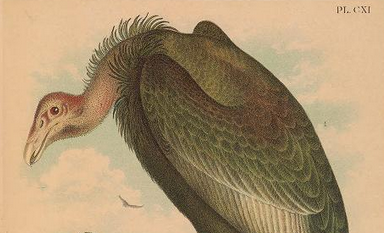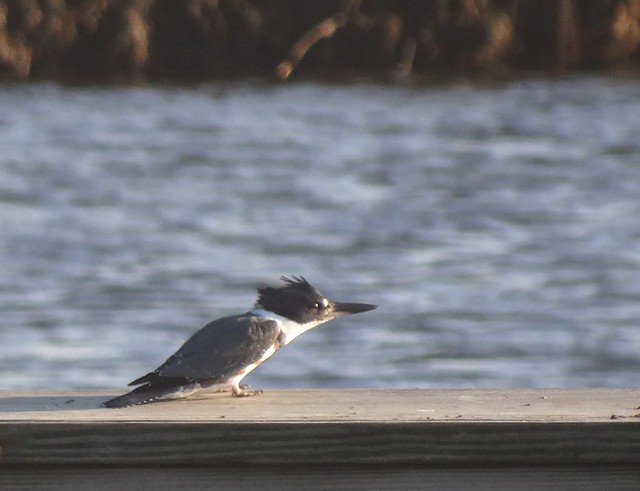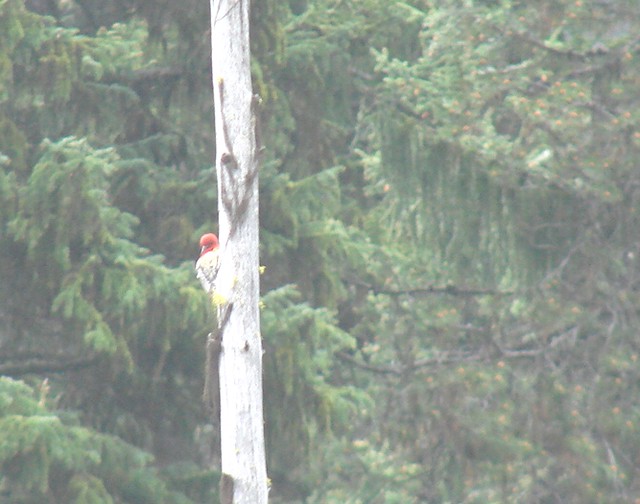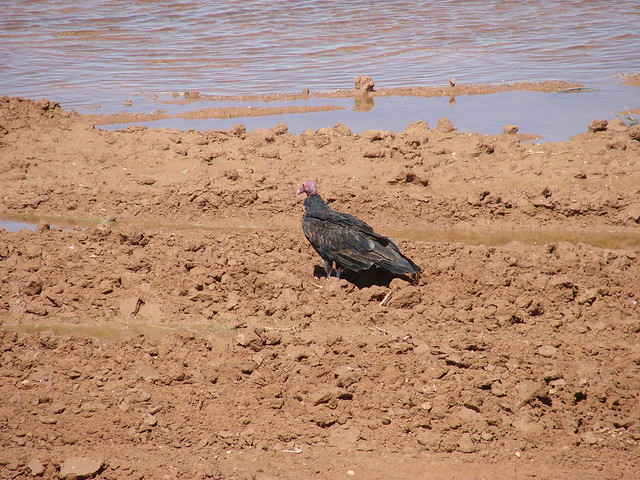Brian E. Sharp’s recent review of the California Condor in its northern range is a remarkable contribution to the historic record of that rare species (and almost reason by itself to join the WFO!).
Sharp adduces nine “records” of the species — or something like it — from British Columbia, beginning with “a bird of the vulture tribe” shot by the eccentric fantasist Alexander Milton Ross in 1817. Just how many of the remaining eight reports pertain to actual condors can probably not be determined, but Sharp is generally more forgiving than I think I would have been.
In any case, there may be a tenth report of California Condors from British Columbia, one that antedates all those cited in the Western Birds article.
In spring 1778, James Cook and the Resolution were at Nootka Bay on Vancouver Island. The crew had little time for zoological investigation, but they did observe
two or three racoons, martins, and squirrels … the prints of a bear’s feet near the shore.
They learned more from “the skins which the natives brought to sell”; the most commonly offered were bears, deer, foxes, and wolves. Ermines and squirrels were scarcer, but lynx seemed to be “by no means rare.” Those were the days.
Somewhat surprisingly, the Englishmen found birds to be both scarce and shy. In the woods they encountered Northwestern Crows and Common Ravens, Steller’s Jays, Pacific Wrens,
and “a considerable number of” Bald Eagles. The local residents also brought them “fragments or dried skins” of a small hawk, a heron, and the Belted Kingfisher.
Certain of the forest birds struck the visitors as likely new to science:
One less than a thrush, of a black colour above, with white spots on the wings, a crimson head, neck and breast, and a yellowish olive-coloured belly….
Indeed, Gmelin soon thereafter named the Red-breasted Sapsucker on the basis of specimens brought back by the expedition and described by Pennant (Gmelin, though, attributing it to northeastern South America rather than to northwestern North America).
Cook also observed
a larger, and much more elegant bird, of a dusky brown colour, on the upper part, richly waved with black, except about the head; the belly of a reddish cast, with round black spots; a black spot on the breast; and the under-side of the wings and tail of a plain scarlet colour….
That one, too, made it into Gmelin’s edition of the Systema, though this time the German taxonomer was even more geographically mixed up when he named the Red-shafted Flicker cafer.
The third suspected novum was
a small bird of the finch kind, about the size of a linnet, of a dark dusky colour, whitish below, with a black head and neck, and white bill.
It’s impossible to know what flavor of Dark-eyed Junco is being described here; Gmelin no doubt assumed, reasonably enough, that it was just the Junco hyemalis of Linnaeus’s 1758 edition, and thus felt no obligation to name it himself.
The last of the small land birds encountered, which “the natives brought … to the ships in great numbers” towards the end of the mariners’ stay, were hummingbirds, which
seem[ed] to differ from the numerous sorts of this delicate animal already known, unless they be a mere variety of the trochilus colubris of Linnaeus.
The natives called the bird “sasinne, or sasin.” Lesson would later use that name to denote a different species, but Gmelin named Cook’s bird, descriptively enough, Selasphorus rufus, the Rufous Hummingbird, the only hummingbird to be first described from a Canadian locality.

Vast numbers of shorebirds can be seen in the area in spring, but Cook and his crew, busy with their ships, found only “a plover differing very little from our common sea-lark” and two sandpipers, neither of them identifiable from the descriptions provided; one was “the size of a small pigeon,” the other “about the size of a lark” and said to bear “a great affinity to our burre,” a name as mysterious to me as the bird.
Waterfowl and other seabirds were “not more numerous than the others.” Gulls and cormorants were seen offshore and in the Sound, as were two species of ducks, a few swans, and a Common Loon. And Cook and his men also observed “quebrantahuessos.”
Now there’s a bird name not easy to come to terms with. In the early nineteenth century, Vieillot tells us in the Nouveau dictionnaire d’histoire naturelle that it was in use by Spaniards for the giant-petrels, southern hemisphere birds never seen off western Canada that Cook and his sailors had identified a year earlier at the Falklands.
The word is also applied, however, to the Lammergeier, that impressive accipitrid vulture of Old World crags and coasts. It seems possible that what Cook was reporting was a similar scavenger, large and long-winged and with an appetite for bones.
Surely not giant-petrels, but perhaps Turkey Vultures — or perhaps, just perhaps, even California Condors.
A few weeks later, in May 1778, Cook again encountered “a few quebrantahuessos,” this time on the shore of Kaye Island in southern coastal Alaska. Again, he provides no information that would let us identify the birds with any real confidence, but the locality is not much farther north than some of the other historical condor reports Sharp cites.
We’ll never know. But it would be a shame to overlook even these possible records — and an even greater shame to ignore the contributions of the Resolution to North American ornithology.








